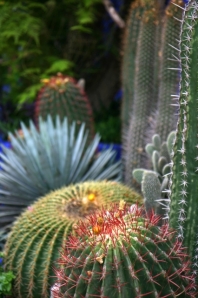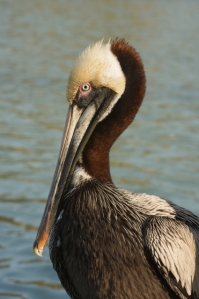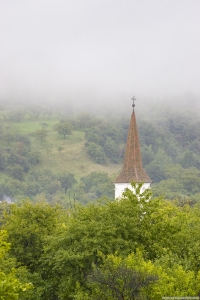THOUGHTS ON THE TRINITY BY A UNITARIAN CHRISTIAN (what and huh?)
Note: Please hold this quote from Walt Whitman while reading today’s blog: “Do I contradict myself? Very well, then I contradict myself, I am large, I contain multitudes.”
Ever since my days with the nuns (the real ones, who by the way I drove crazy with my incessant questioning during Catholic catechism classes), I have struggled in vain with the dogma of the Trinity. Try as I might, my rational mind has always found it to be too much philosophy and too little of the practical. It has been only recently that I have begun to admire its poetry, for me personally, its’ saving grace.
 The construct of the Trinity originated with a handful of Church Fathers, around or about 345 CE. Before that, Christians had their own local “covenant groups”as it were, which met in people’s homes or shops. Ideas about who and what Jesus was flowed freely and unencumbered.
The construct of the Trinity originated with a handful of Church Fathers, around or about 345 CE. Before that, Christians had their own local “covenant groups”as it were, which met in people’s homes or shops. Ideas about who and what Jesus was flowed freely and unencumbered.
First, let me try to explain what the meaning of the Trinity is. It means one God in three persons. They are all coeternal with one another (Father, Son, and Holy Spirit). They all have their own substances, but at the same time are consubstantial. And oh yes, they are all one essence (and other stuff called hypostasis, which means the substance, essence, or underlying reality).
What is an essence? You must look to the tomes of Greek philosophy for this. Words such as substance, consubstanital, essence, all have their roots in the Greek philosophers’ discussions of ontology (the study of what it means to be, to exist). Thank you, Aristotle… NOT!
So I’ve decided to blame the early Christian clergy’s infatuation with Greek philosophy for introducing a tradition that I can’t find in the Old or the New Testament. In fact, in John 20:17- Jesus refers to, “my Father and to your Father, and to my God, and to your God.” How could Jesus say that and then add, but my Father is me and my God is me? I guess maybe because he was in his human body and at that point had limits in his knowledge of actually being God himself?Also, Jesus was a pious, practicing Jew, which means that he was a strict monotheist. “The Lord our God is one God.” (Deuteronomy 6:4)
 A multitude of proponents point to the familiar refrain of the “unfathomable mystery” of the Trinity. I’m all for unfathomable mysteries, although life itself is already a mystery, do we need to make it any more complex?” Yet, I quote humbly from the words of Simone Weil: “I am not a Catholic; but I consider the Christian idea, which has its roots in Greek thought and in the course of the centuries has nourished all of our European civilization, as something that one cannot renounce without being degraded.”
A multitude of proponents point to the familiar refrain of the “unfathomable mystery” of the Trinity. I’m all for unfathomable mysteries, although life itself is already a mystery, do we need to make it any more complex?” Yet, I quote humbly from the words of Simone Weil: “I am not a Catholic; but I consider the Christian idea, which has its roots in Greek thought and in the course of the centuries has nourished all of our European civilization, as something that one cannot renounce without being degraded.”
Nun Tuck may be a heretic, but at least one in good company. In 1531, a scholar named Michael Servetus wrote a treatise called “De Trinitatis Errorbus” or “The Errors of the Trinity”. He was promptly burned alive at the stake for it. He spoke of the Oneness of God, the Unity of God. Many Unitarians consider him to be the first Unitarian martyr.
I wonder if it would have helped any if they had known about the popular slogan, “What would Jesus do?” before choosing to burn him alive. It’s difficult to believe that the Jesus in the Bible would have been as intolerant. Instead, if someone disagreed with him, Jesus would have done as he advised his apostles in Luke, “Shake the dust out of your sandals”… forget about it (or them), and move on.
 For me, being a Christian means that if I follow the teachings of Jesus Christ, I will live wholly and holy. It’s hard work with limited success, but like those who follow Buddha or Muhammad to the best of their ability, life is more abundant.
For me, being a Christian means that if I follow the teachings of Jesus Christ, I will live wholly and holy. It’s hard work with limited success, but like those who follow Buddha or Muhammad to the best of their ability, life is more abundant.
I mentioned earlier that what moves me is the more metaphorical understanding of the Trinity; a phrase that resonates for me is “The Dance of the Trinity.” Modern poet Ruth Duck describes it beautifully:
“Holy Spirit, who moved at the beginning of creation, teach me your divine dance, that I may move with you./Through my hands, invite others to the circle of love, that we may move in rhythm together./Praise to you, Spirit, who breathes the pulse of life, through Jesus Christ, who danced among us, to the glory of God the Source, in whom we live and move and have our being.”



















